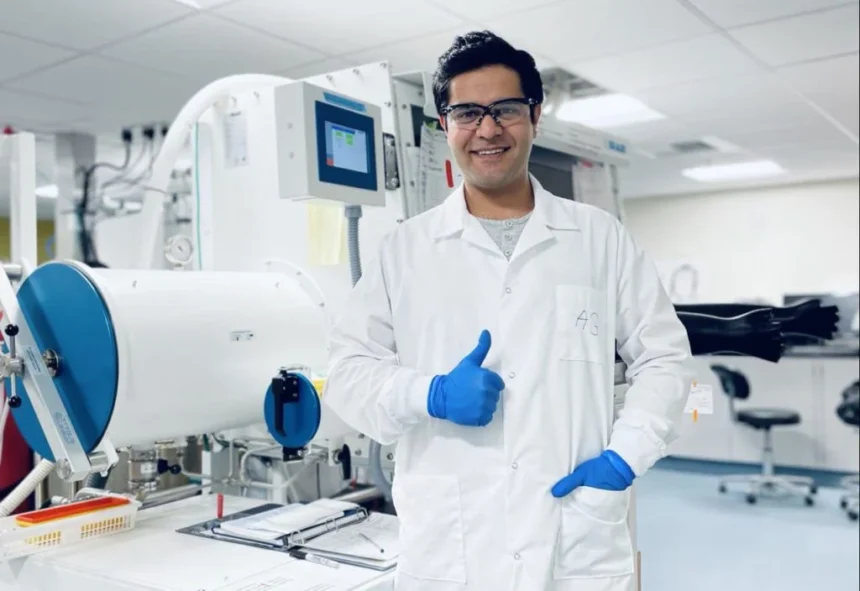What Does a Biomedical Engineer in Canada Do?
Naera F biomedical engineer Canada: A biomedical engineer in Canada blends principles of engineering, biology, and medicine to design and develop medical devices, diagnostic equipment, biomaterials, software, and health-care solutions. Some key roles:
- Designing and testing medical devices (e.g. prosthetics, imaging machines)
- Developing medical software or algorithms (signal processing, imaging analysis)
- Working in clinical engineering in hospitals: maintenance, safety, regulatory compliance
- Research and development: regenerative medicine, tissue engineering, biomaterials, nanotechnology
- Quality assurance / regulatory affairs to ensure conformity with standards (Health Canada, ISO etc.)
Education usually includes a Bachelor’s degree in Biomedical Engineering or a related discipline, often followed by a Master’s or PhD, depending on specialization. Licensure or affiliation with professional bodies (like Engineers Canada / provincial Engineering regulatory bodies) is critical for certain roles.
Typical Pathway & Education: From Student to Professional
If “Naera F” is (or were) a working biomedical engineer, her path might include:
- Completion of undergraduate training (B.Eng / BSc-Engineering) in Biomedical Engineering or closely related field.
- Possibility of graduate studies (Master’s / PhD), especially if engaged in research or academic work.
- Internships or co-ops in hospitals, medical device firms, research labs to gain hands-on experience.
- Professional certification/licensure (P.Eng) to practice engineering legally; for working in regulated health-care settings this may be required.
- Continuous professional development: attending conferences, publishing papers, staying current with Health Canada rules, device safety, software in medical devices etc.
Areas of Impact & Specialization that Might Define Naera F’s Profile
Depending on her interest or specialization, “Naera F” could excel in one or more of these subfields:
- Medical Device Development: designing implants, prosthetics, wearable devices, diagnostic hardware.
- Biomedical Imaging and Signal Processing: MRI, CT, ultrasound image analysis, machine learning for diagnostics.
- Biomechanics & Biomaterials: artificial tissues, polymer scaffolds, biomimetic material design.
- Regenerative Medicine / Tissue Engineering: stem cell research, scaffold design, organoid research.
- Clinical or Hospital Engineering: ensuring that medical equipment is safe, works well, maintained, regulatory compliance.
- Health Technology Innovation / Digital Health: telehealth systems, wearable sensors, health informatics, software regulatory work.
Achievements might include published papers, patents, grants, device prototypes, industry collaborations.
Challenges & Considerations for Biomedical Engineers in Canada
Biomedical engineering is a rewarding field but comes with its own hurdles:
- Regulatory and safety requirements: All medical devices in Canada must comply with Health Canada regulations. If devices are exported, international regulations (FDA / CE etc.) also matter.
- Funding & research cost: High end equipment, materials, biological studies are expensive. Grants are competitive.
- Interdisciplinary collaboration demands: Biomedical engineers must work with clinicians, biologists, regulatory experts, manufacturers. Communication and bridging gaps are essential.
- Ethical, clinical approval: Research involving human tissues, trials, patient data, etc., require ethics approval and privacy / safety protections.
- Keeping pace with new technologies: AI, 3D printing, biomaterials, nanotech, digital health etc. evolve fast; staying current is necessary.
- Job market variation by region: Some provinces, or urban centers, have more opportunity; remote or less populous provinces may have fewer dedicated research or device companies.
What Makes a Biomedical Engineer Stand Out: Metrics & Achievements
For an engineer like “Naera F” to be notable, typical standout indicators include:
- Publications in recognized peer-reviewed journals (especially in high impact if in specialized biomedical engineering, medical imaging, biomaterials, etc.)
- Patents or prototypes: having developed or co-developed a medical device or health technology that is at least in prototype stage or better.
- Grants & funding from national bodies (e.g. NSERC, CIHR, provincial research agencies)
- Industry partnerships or translational impact: bringing lab findings into clinical trials or practical devices.
- Awards / honors: recognition from professional societies (CMBES = Canadian Medical & Biological Engineering Society), university awards, fellowships,.
- Public presence & professional networking: speaking at conferences, teaching, mentorship, regulatory or safety advocacy.
Working Environment & Career Prospects in Canada
Canada offers a range of opportunities for biomedical engineers. If “Naera F” is practicing, she might work in:
- Universities / Academic Research Centers: focusing on research, teaching, grant writing.
- Medical Device Companies: R&D, design, testing, regulatory, manufacturing.
- Hospitals / Clinical Engineering Departments: maintaining and assuring safety of medical equipment, consulting.
- Government / Regulatory Bodies: Health Canada, agencies involved in device approvals, safety, legislation.
- Startups / Tech Innovation Ecosystem: digital health, wearable sensors, AI in healthcare.
Salaries vary by experience, location, specialization. According to salary data, for example, a biomedical engineer in Canada with a Bachelor’s can expect average salaries around CAD 82,000/year; higher (CAD 110,000+) with advanced degrees or leadership roles.
How to Verify & Build a Reliable Profile of “Naera F”
Since “Naera F” is not presently documented (in my searches), here are steps you or someone else can take to verify and build a factual profile:
- Search academic publication databases (PubMed, Google Scholar, IEEE Xplore) for “Naera F biomedical engineering Canada” or variations. Look for names, institutional affiliations, co-authors.
- Check university staff directories: Many Canadian universities list faculty, research associates, PhD candidates, and lab members. If Naera F is associated with one, likely listed.
- Search professional associations: Bodies like CMBES (Canadian Medical & Biological Engineering Society) may have membership directories. Awards nominations, presentations, etc.
- Check LinkedIn / ResearchGate: Professionals often maintain profiles with education, experience, publications.
- Check patents databases: Canadian Intellectual Property Office, WIPO, USPTO; see if there are patents under “Naera F” or similar name.
- Search media outlets or university news: if she made contributions, news releases, press on device development or research might mention her.
Once reliable sources are found, the profile would draw from them: education, roles, published works, achievements.
Conclusion
I did not locate credible public information confirming a biomedical engineering professional named “Naera F” based in Canada. It is possible that she is early in career, works under a different name, or her profile is not yet visible in academic / professional directories.
However, a strong profile for someone with that title would include education, specialization, publications/patents, institutional affiliation, and impact. The pathway for verification is laid out above if you want to aim to build that profile.








